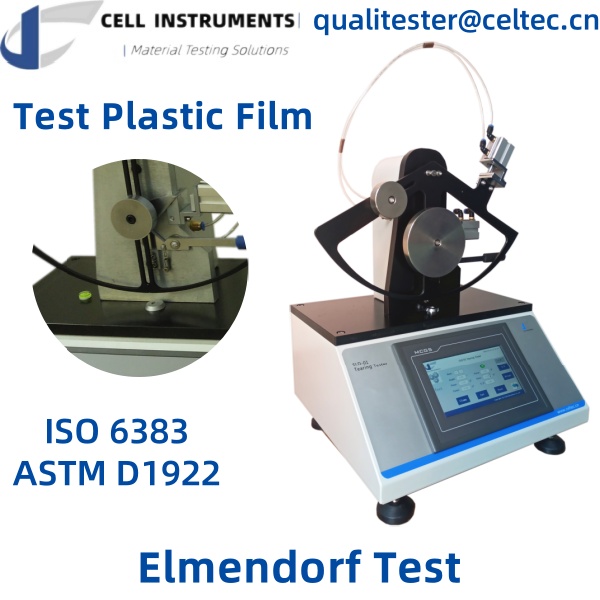Introduction: The Importance of Tear Resistance in Material Testing
Tear resistance is a critical mechanical property that plays a vital role in determining a material’s durability and performance. Materials that are prone to tearing can fail in various applications, leading to significant consequences in industries such as packaging, medical devices, textiles, and more. The Elmendorf test, named after its inventor Armin Elmendorf, is a widely recognized method for assessing tear resistance, providing valuable insights into a material’s ability to withstand tearing forces.
Understanding the Elmendorf Test
The Elmendorf test is a standardized method used to measure the tear resistance of various materials. This test determines the average force required to propagate a tear in a material after an initial cut is made. The results from this test are essential for industries that require materials to maintain structural integrity under stress, such as packaging and textiles.
In the Elmendorf test, a pendulum mechanism is used to tear a sample of material over a fixed distance. The energy required to propagate the tear is measured, and this energy loss corresponds to the tear resistance of the material. This method is particularly useful for comparing the tear resistance of different materials and ensuring that they meet the required standards for their intended applications.
Key Standards for Elmendorf Test
The Elmendorf test is governed by several international standards, which provide guidelines on how the test should be conducted and how the results should be interpreted. Some of the key standards include:
- ASTM D1424: This standard outlines the procedures for testing the tear resistance of woven fabrics using the Elmendorf apparatus.
- ISO 6383: This international standard specifies the method for determining the tear resistance of plastic films using the Elmendorf test.
- ASTM D1922: This standard provides guidelines for testing the tear resistance of plastic films and thin sheeting using the Elmendorf apparatus.
- ASTM D689: This standard covers the tear resistance testing of paperboard materials using the Elmendorf method.
- ISO 1974: This standard details the method for testing the tear resistance of paper using the Elmendorf apparatus.
These standards ensure that the Elmendorf test is conducted consistently and that the results are reliable and comparable across different materials and industries.
Application of Elmendorf Test in Material Testing
The Elmendorf test is applicable across a wide range of materials, including textiles, paper, plastic films, and other sheet materials. The test is particularly important for materials that are used in packaging, where tear resistance is crucial for ensuring that the packaging can protect its contents effectively.
For instance, in the packaging industry, materials with high tear resistance are essential for protecting products during transportation and storage. A material that tears easily could lead to product damage and loss, making tear resistance a key factor in material selection.
In the medical field, materials used in the production of medical devices and packaging must also exhibit high tear resistance to ensure safety and reliability. The Elmendorf test provides manufacturers with the data they need to select materials that meet the stringent requirements of the medical industry.
Cell Instruments’ SLD-01 Elmendorf Tear Tester
The SLD-01 Tear Tester by Cell Instruments is designed to measure the tear resistance of materials accurately and efficiently. This tester adheres to all relevant international standards, including ASTM D1424, ISO 6383, and ASTM D1922, ensuring that the results are reliable and consistent.
Key features of the SLD-01 Tear Tester include:
- PLC Control and HMI Touch Screen: Ensures precision and ease of use.
- Wide Test Range: Accommodates various materials, making it versatile for different industries.
- Pneumatic Specimen Clamping: Provides secure and consistent gripping, essential for accurate results.
- Automatic Data Collection: Simplifies the testing process and enhances data analysis.
For industries requiring high tear resistance in materials, the SLD-01 Tear Tester is an indispensable tool for ensuring that products meet the necessary standards and perform reliably in their applications.
Conclusion: The Significance of Elmendorf Test in Ensuring Material Quality
The Elmendorf test is a crucial method for assessing the tear resistance of materials, ensuring that they can withstand the forces they will encounter in real-world applications. By adhering to key standards such as ASTM D1424, ISO 6383, and ASTM D1922, manufacturers can guarantee the quality and durability of their products.
FAQs
- What is the Elmendorf test used for?
- The Elmendorf test is used to measure the tear resistance of materials, providing insights into their durability and performance under stress.
- Which industries benefit the most from the Elmendorf test?
- Industries such as packaging, textiles, medical devices, and paper products benefit the most from the Elmendorf test, where tear resistance is a critical factor.
- What standards govern the Elmendorf test?
- The Elmendorf test is governed by standards such as ASTM D1424, ISO 6383, ASTM D1922, ASTM D689, and ISO 1974.
- How does the SLD-01 Tear Tester improve tear resistance testing?
- The SLD-01 Tear Tester offers advanced features like PLC control, wide test range, and automatic data collection, ensuring accurate and consistent tear resistance testing.
- Why is tear resistance important in packaging materials?
- Tear resistance in packaging materials ensures that the packaging can protect its contents during transportation and storage, preventing damage and product loss.


